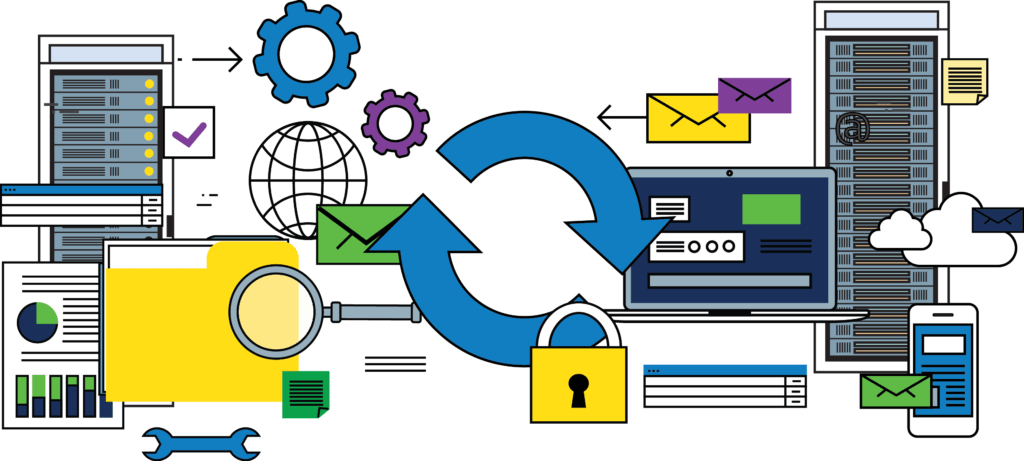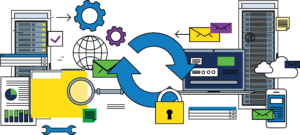Quickly Implementing An Enterprise-wide AP/AR Solution In A Heterogeneous Organization

For many Fortune 500 organizations with multiple business units, they often find a variety of finance, accounting, and ERPs systems scattered throughout the enterprise. Many have multiple vendors for each platform with unique customizations, and multiple releases of software. This is often a result of acquisitions and BUs that operated with a large degree of autonomy. It results in varying maturity across divisions, sub-optimal AP/AR operation, and a nightmare to obtain a consolidated view of overall cash operation.
Many try to change it a division at a time, often because it is the path of least resistance. Each division can keep their ERP/Financial system, but it has a hidden cost of an aggregate project timeline that measured in years. It is a catch-up game – once they are done with the last division, it is time to go back to the first division to repeat the entire process for the next enhancement.
We believe there is a better way to get this done while still accommodating the heterogeneous nature of the landscape.
Rather than relying on each legacy platform to perform AP/AR processing within its unique framework, we believe you can achieve better result, much faster implementation, and with far less resources by implementing a centralized enterprise AP/AR platform. This platform will use a best-in-class invoice ingestion engine to extract each invoice accurately, then automate AP/AR operation at each division by adhering to their own process flow and business rules. Rather than rip-and-replace or forced upgrades, our integration engine replicates transactions back to each of the legacy ERP or financial systems. As a result, each division maintains control of their own ERP with the latest data, improves their AP/AR efficiency, and eliminate their headache in maintaining constantly changing AP/AR business rules – it is a win-win for everyone.
This approach is especially attractive for private equity or enterprise that is active in acquisition, as the pattern to optimize and standardize the cash operation is quickly repeatable in every new company. Leaving you more time to focus on other high value tasks.
It affords you an option to centralize AP/AR operation with a Center-of-Excellence staffed by AP/AR Subject Matter Experts. While each BUs can still maintain a unique process, all future changes and optimizations are handled centrally and efficiently, and continuous enhancements are automatically inherited by each business unit.
In addition, it can provide a consolidated, real-time view of your overall cash operation across the enterprise, allowing one to quickly identify root-cause for sub-optimal units. It gives the finance executives unprecedented control and visibility into their entire operation, which was impossible with a decentralized approach.
If you are embarking on a AP/AR modernization journey, we hope you will take this approach into consideration, it can help you save a lot of headache down the road.

 In raising our children, we emphasize in enabling them to become self-sufficient, we don’t want them asking us to tie their shoelace every morning when they are 30. But as an adult, we often accept paradigm for relying on others. It is not about refusing help when we need it, it is about questioning whether certain tasks should be so hard that prevent us to do them ourselves, especially if we can do it faster and better than others.
In raising our children, we emphasize in enabling them to become self-sufficient, we don’t want them asking us to tie their shoelace every morning when they are 30. But as an adult, we often accept paradigm for relying on others. It is not about refusing help when we need it, it is about questioning whether certain tasks should be so hard that prevent us to do them ourselves, especially if we can do it faster and better than others. One of the most important technology innovation is not increase in speed, but in making it easy to use by improving human-technology interface. With proper design, kids can effortlessly navigate their tablets when they are 2 years old. So don’t take “This system is really not meant for you to make changes yourself” as an answer, that was only true back in the 90’s, it is to your best interest to demand better.
One of the most important technology innovation is not increase in speed, but in making it easy to use by improving human-technology interface. With proper design, kids can effortlessly navigate their tablets when they are 2 years old. So don’t take “This system is really not meant for you to make changes yourself” as an answer, that was only true back in the 90’s, it is to your best interest to demand better.  While questions like “Do you integrate with my accounting package?”, “How long does it take?”, “How much does it cost?” are intuitive, the equally important questions such as “What is your integration approach?”, “What is the delay between data synchronization?”, “Is the integration two-way or one-way?”, “How do you handle conflicts?” are often not asked.
While questions like “Do you integrate with my accounting package?”, “How long does it take?”, “How much does it cost?” are intuitive, the equally important questions such as “What is your integration approach?”, “What is the delay between data synchronization?”, “Is the integration two-way or one-way?”, “How do you handle conflicts?” are often not asked. 